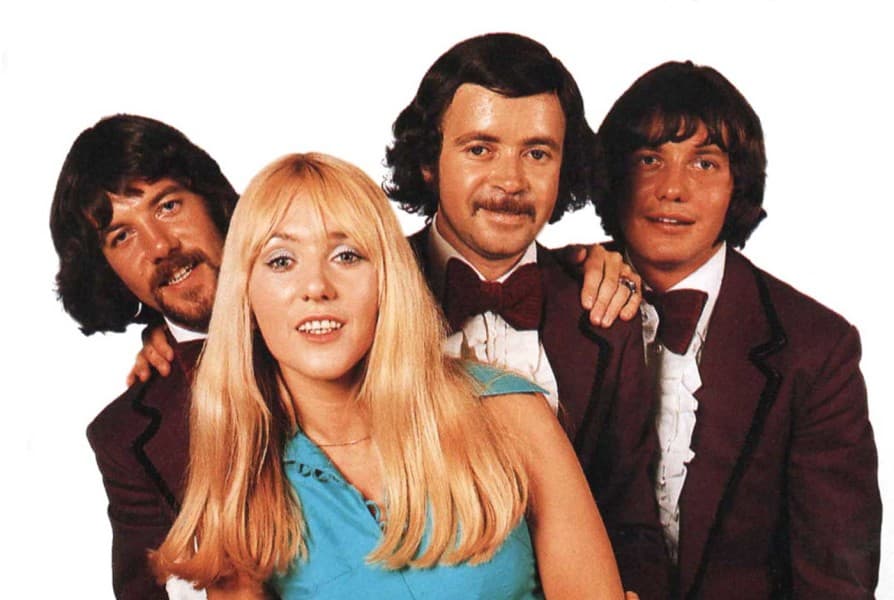
“Tweedle Dee, Tweedle Dum”: The Catchy Anthem of a Seemingly Senseless Conflict
Sometimes, a song just arrives, seemingly out of nowhere, and sweeps you up in its infectious rhythm, even if its deeper meaning remains a delightful enigma. For many of us who remember the early 1970s, Middle Of The Road’s “Tweedle Dee, Tweedle Dum” was precisely that kind of track. This effervescent pop tune, released in March 1971, burst onto the charts with an undeniable charm. It was a massive success across Europe, particularly, and here in the UK, it soared to a highly impressive No. 2 on the UK Singles Chart, following close on the heels of their even bigger hit, “Chirpy Chirpy Cheep Cheep.” Beyond its chart performance, “Tweedle Dee, Tweedle Dum” became one of four Middle Of The Road singles to sell over two million copies each, cementing its place as a genuine pop phenomenon.
Now, you might recall Middle Of The Road as that Scottish band with the bright harmonies and the captivating lead vocals of Sally Carr. They were, in many ways, the pioneers of what would become known as Europop, laying much of the groundwork before ABBA truly dominated the scene. The band, originally known as Part Four and then Los Caracas, had actually relocated to Italy in 1970 after struggling to find success in their native UK. It was there they met Italian producer Giacomo Tosti, who was instrumental in shaping their distinctive, sunny sound. This move proved to be a stroke of genius, leading to their international breakthrough. “Tweedle Dee, Tweedle Dum” was written by the Italian songwriting trio of Lally Stott, Giosy Capuano, and Mario Capuano. Stott, an accomplished musician in his own right, had a knack for crafting catchy melodies, and this song was a perfect fit for Middle Of The Road’s cheerful, accessible style. Interestingly, the song was initially used in a short film by Fiat to promote their new Fiat 127 car, which certainly helped propel it into the public consciousness, especially in Italy where it first made waves.
The meaning behind “Tweedle Dee, Tweedle Dum” is, for many, deeply rooted in the classic characters from Lewis Carroll’s Through the Looking-Glass, and what Alice Found There, who famously “agreed to have a battle.” The song seems to evoke a nonsensical, almost childish dispute, with the “tweedle dee” and “tweedle dum” representing two opposing, yet perhaps indistinguishable, sides. The lyrics speak of two individuals or factions engaged in a conflict, the reasons for which are obscure or even nonsensical: “If you knew the reason for the fighting / you would never understand.” This playful yet pointed observation on seemingly futile disagreements has a timeless quality. It can be seen as a lighthearted commentary on petty squabbles, or perhaps even a subtle critique of larger, more serious conflicts whose origins are lost or irrational. It’s a sentiment that, for anyone who’s witnessed pointless arguments, resonates deeply. The song’s brilliance lies in taking a whimsical, almost childlike concept and applying it to a universal human experience.
What truly made “Tweedle Dee, Tweedle Dum” so memorable was its irrepressible energy. Sally Carr’s vocals are a delightful blend of innocence and enthusiasm, perfectly suited to the bubblegum pop genre. The infectious chorus, with its repetitive, almost chant-like quality, lodged itself firmly in the minds of listeners and refused to leave. It was a song designed for singalongs, for carefree moments, and for simply enjoying the sheer joy of a well-crafted pop tune. The buoyant arrangement, with its driving rhythm and bright instrumentation, felt like a breath of fresh air on the airwaves. It wasn’t trying to be profound or avant-garde; it simply aimed to entertain and succeeded gloriously.
Looking back now, “Tweedle Dee, Tweedle Dum” remains a charming relic of an era when pop music often prioritized pure, unadulterated fun. It’s a reminder of those simpler times, perhaps, when a catchy melody and a lighthearted message were enough to capture the world’s attention. It stands as a testament to Middle Of The Road’s unique place in pop history, a band that, by daring to go their own way to Italy, found a sound that resonated across borders and generations. And so, whenever that familiar “Tweedle Dee, Tweedle Dum” starts playing, a smile invariably crosses one’s face, and for a few brief minutes, we’re transported back to a time when life, and its conflicts, seemed a little less complicated, a little more like a playful, if perplexing, game.